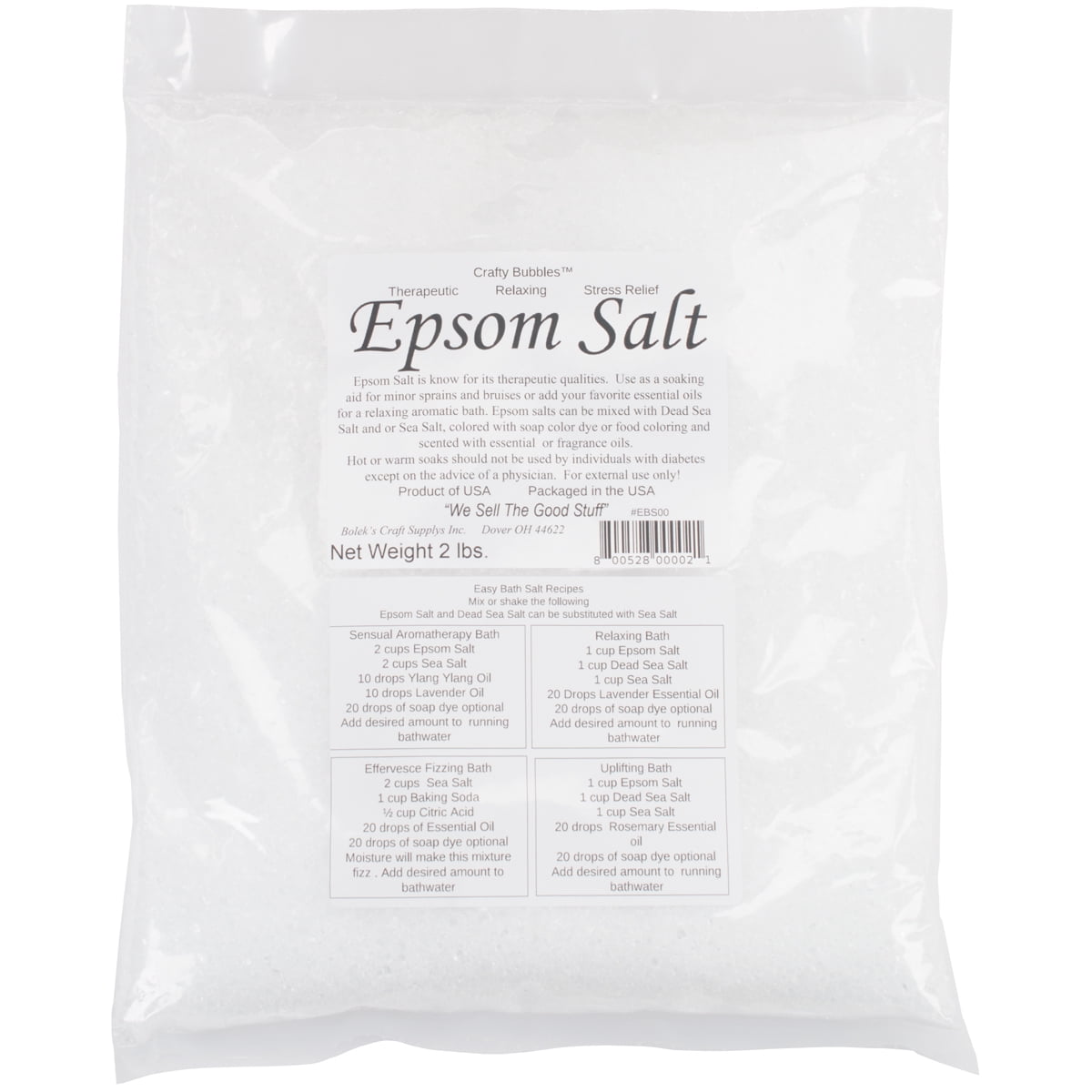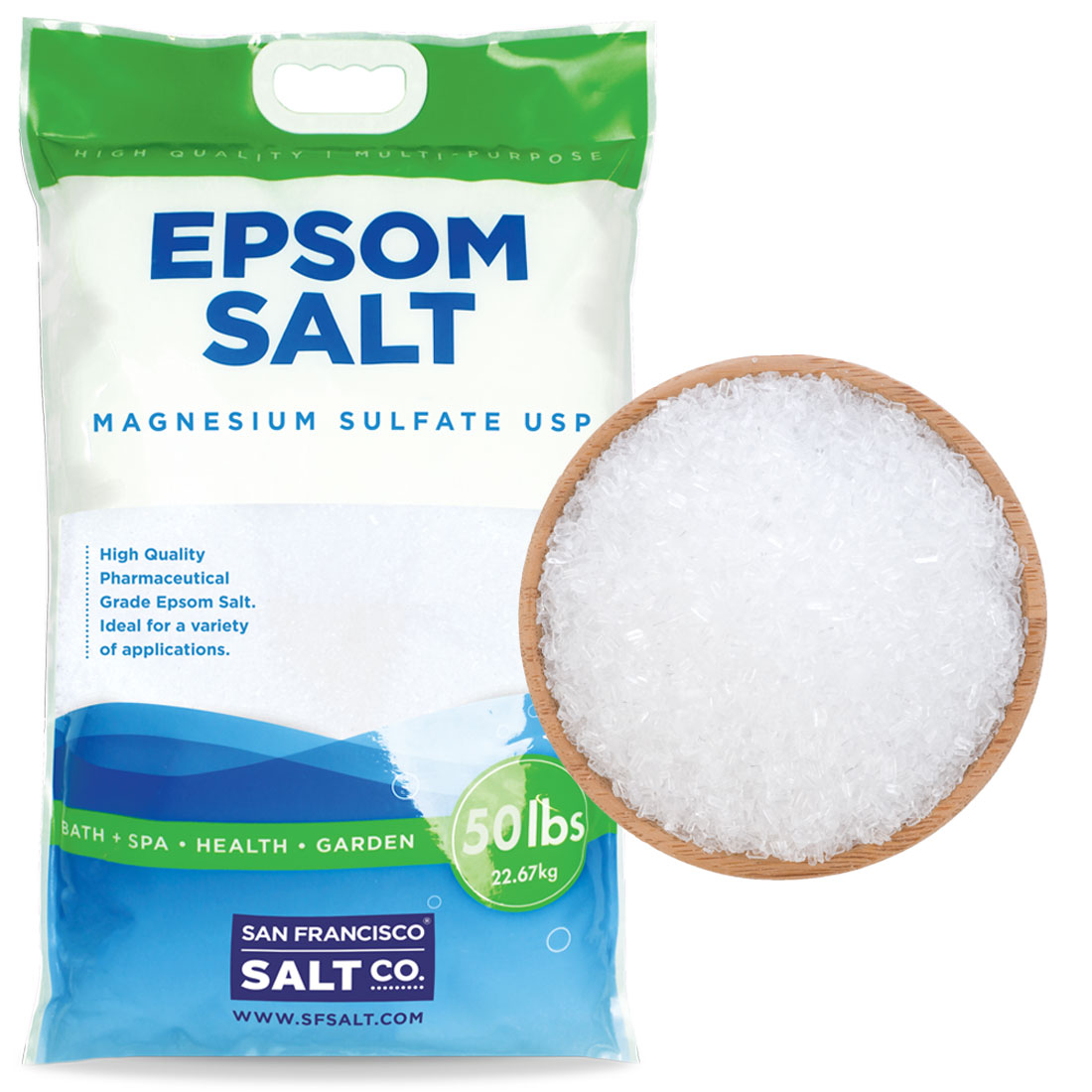
Sprinkle it directly on the pests when you spot them. Kills Pests NaturallyĮpsom salt causes dehydration in slugs, snails, and other bugs and kills them fast.
#Newton county water and epson salt full#
Spraying the leaves with a solution of Epsom salt and water (1 tablespoon in a gallon of water) will keep them lush and full of color! 7.

Magnesium makes the foliage dense and greener by boosting chlorophyll production, which adds to the richness and colors of leaves. Makes Foliage GreenerĪ report by the University of Minnesota Extension presents the fact that magnesium helps to activate specific enzymes, and its deficiency can result in loss of healthy green color, and the plant develops yellowing between the veins toward the center of the leaf. Eliminates Yellowing of LeavesĪ report by the Washington State University presents the fact that the highly soluble nature of Epsom salt relieves sulfur deficiency in plants, eliminating yellowing of leaves.Īdd 1 tablespoon of Epsom salt in a gallon of water and use it as a spray on the foliage or water the plant once in 3-4 weeks to make the leaves healthy again.

To combat these issues, all you have to do is to spray the leaves with an Epsom salt solution diluted with water. Leaves also curl upward or inward due to sulfur deficiency. Interveinal chlorosis can lead to necrosis (death of tissue) of the affected areas. Older leaves lose their green color except in the veins. Prevents Leaf CurlingĪccording to a report by the South Dakota State University, Magnesium deficiency affects lower leaves the most–causing curling, interveinal chlorosis (leaf veins stay green while the regions between them turn yellow). We have a detailed article on how Epsom salt helps ferns here 4. You can avoid this with Epsom salt to help ferns with chlorophyll production, healthy growth, and resistance against diseases and pests.Īdd 2 tablespoons of Epsom salt in 1 gallon of water and spray once a month on the foliage when your ferns are growing actively. Magnesium and sulfur deficiency causes the ferns to turn pale and yellow. Keeping Ferns Lush Shutterstock/NataliiaChubakova It will also eliminate the chances of wilting and leaf discoloration. Add 1 tablespoon of Epsom salt in a gallon of water and water the plants after re-potting. It Helps to Minimize the Transplant ShockĮpsom salt is useful to minimize transplant shock while re-potting plants. Plants like pothos and philodendron benefit the most from it. You can also spray the solution on the foliage to maximize absorption.

Use 1 tablespoon in 1 gallon of water and use it on plants once in 3-4 weeks. This helps the plant to absorb more from the growing medium, resulting in better growth and green leaves. Promotes Nutrient Intake shutterstock/Jeerayut RianwedĮpsom salt is very useful for your indoor plants as it encourages nutrient intake.
#Newton county water and epson salt how to#
How to Use Epsom Salt on Indoor Plants? 1. The best part is, Epsom salt is easy on the pocket and is also environmentally friendly, which makes it one of the best organic methods to keep your indoor plants healthy and thriving! You can use Epsom salt in a variety of ways to keep your indoor plants in the best of their condition, thanks to its magnesium and sulfur content.

Let’s have a look at How to Use Epsom Salt on Indoor Plants! Have a look at some amazing Epsom Salt Uses In the garden here Epsom Salt for Houseplants can help them in a variety of ways, from keeping them green and lush to promoting blooms! Let’s have a look in detail! shutterstock/inewsfotoĮpsom Salt for Houseplants works in a great way to keep them lush and out of many issues.


 0 kommentar(er)
0 kommentar(er)
